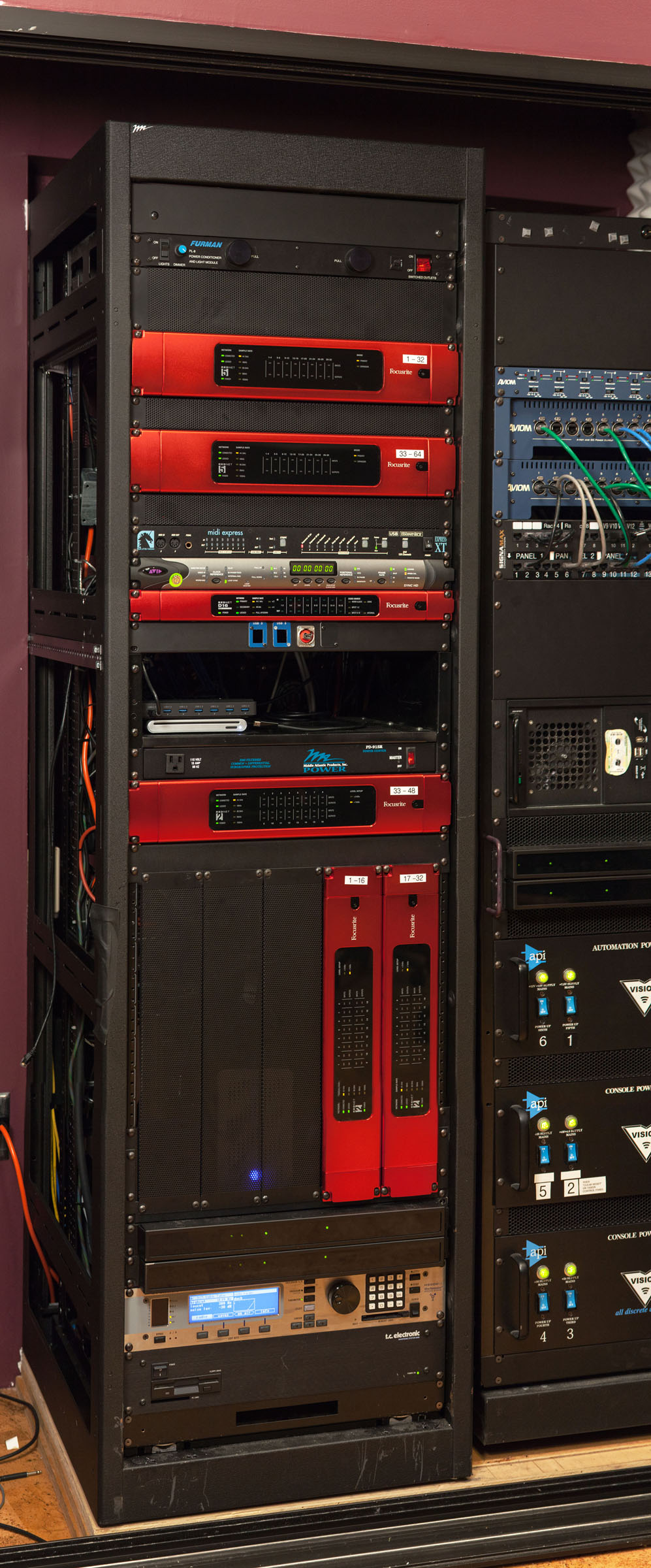Focusrite RedNet Interfaces Connect the Music and Video Production Suites at the University of Michigan
With 28 devices, this is one of the largest U.S. RedNet installations

With the latest addition of eight RedNet MP8R’s, Dave Greenspan, Managing Producer of Audio Studios, states, “The quality of the mic pre’s is amazing.”
Los Angeles, California – Opened in 1996, The James and Anne Duderstadt Center, a part of the University of Michigan (U-M) Library, houses the Digital Media Commons (DMC), a creative laboratory that offers students and faculty access to rich state-of-the-art media production tools around the clock. Located within the DMC complex are two electronic music studios, a recording studio and a video production studio that are linked via a Dante™ network served by an extensive collection of Focusrite RedNet Ethernet interfaces that enable users to access and route audio between any of the DAWs, analog consoles and outboard processors from anywhere within those facilities.
According to Dave Greenspan, Managing Producer, Audio Studios, the implementation of the Focusrite RedNet system eliminated bottlenecks in the previous signal flow that restricted the I/O count to just 16 channels from users’ laptops in each control room, permitted only limited access to equipment in each room as well as between rooms, and made it difficult to utilize other production applications with the installed Pro Tools|HD® systems. “We also have Ableton, Logic, Final Cut Pro, Pyramix and other platforms that have to operate together,” explains Greenspan. “I wanted to go with the Focusrite RedNet system because it just doesn’t care what software I throw at it. You can work in the box or out of the box; however you want to work. That’s the beautiful thing about these RedNet interfaces and the Dante network—whatever the pedagogy requires, it can handle it.”
Two of the rooms, the Audio Studio and Electronic Music Studio (EMS) B, are equipped with three 16-channel RedNet 2 analog I/O interfaces, two 16-channel RedNet 5 Pro Tools|HD bridges and a RedNet D16 AES 16-channel digital signal interface. Each system provides 48 analog lines to an API Vision console—respectively configured for 5.1 and 7.1/8.0 surround sound operation—and enables 64 channels to Pro Tools|HD Native, 128 channels to Core Audio-based DAWs (via RedNet PCIe cards) and up to 16 AES3 interconnections with the outboard Bricasti, Eventide and TC Electronic multichannel reverb systems. EMS A, outfitted with a RedNet 2, a RedNet 5 and a RedNet 1 eight-channel A-D/D-A converter, supports 128 channels to Core Audio applications, 32 channels to Pro Tools|HD Native and 24 lines to the API 1608 analog console.
The DMC facility has also recently taken delivery of a RedNet system for the Video Studio, which is scheduled for upgrade and incorporation into the Dante network during the summer. Audio system revisions include the installation of eight of Focusrite’s new RedNet MPR8 eight-channel remote-controlled microphone preamplifiers and A/D converters, which have just started shipping.
Last year, Greenspan and his team isolated the Video Studio’s front-of-house system, centered on a Yamaha CL5 Dante-capable mixing console, from the control room system, which offers recording through a Yamaha DM2000 desk fitted with Dante networking cards. The Video Studio’s 48 wired microphone lines will now be split to six of the MPR8 units, enabling recording through high-resolution Focusrite mic preamps and precision converters. “If we want to go into the Audio Studio, for example, on the network and record at 192 kHz, we can,” says Greenspan. Two of the MPR8s introduce the studio’s wireless microphones and other sources into the Dante network.
“The quality of the mic pres is amazing,” comments Greenspan. “There is not a single person that I’ve talked to around the country who has checked out the RedNet 4”—with which the MPR8 shares its pedigree—“who hasn’t said it is stunning. And if they don’t say ‘stunning’ then it’s something even better.”
Video Studio users will also be able to run any audio production software they wish on their laptops and connect to the Dante network through a RedNet 1 interface. Greenspan intends to extend similar capabilities into the Audio Studio and EMS A and B. “We’re installing Ethernet ports so that if you have the Dante Virtual Soundcard controller on your computer and you want to use your software, you can plug in and tie into our Focusrite converters. The whole idea is that the rooms are supposed to be transparent; they are supposed to be just a series of tools that you can use however you wish to use them.”
Making operation of the facilities even more transparent for users, Greenspan and his staff have created presets that switch the signal flow to the desired sample rate. “We’ve done all the presets for both Pro Tools and non-Pro Tools setups. Students don’t have to sit there and check all the boxes, they can focus on the creative side of things.”
Focusrite’s RedNet audio-over-IP products provide an elegant, flexible and transparent solution at the DMC, enabling complex interconnectivity that would have been almost impossible to achieve using analog patching. “This is a big deal for us,” Greenspan observes. “I realize other people are doing way more complex things, but we’re putting all of these manufacturers together, speaking in a digital universe, and they have a common language—which is next to impossible in the digital world. I find that amazing.”
Photo Caption: One of the A/V control racks at the Digital Media Commons (DMC) at The James and Anne Duderstadt Center, a part of the University of Michigan (U-M) Library, featuring a number of Focusrite RedNet units. Photo courtesy of Dave Greenspan, University of Michigan. © 2015.
Get the TV Tech Newsletter
The professional video industry's #1 source for news, trends and product and tech information. Sign up below.
